- Home
- Patrick Robinson
Nimitz Class am-1 Page 41
Nimitz Class am-1 Read online
Page 41
“I see it’s in the South Atlantic. Where exactly?”
“It’s about a hundred miles due south of the Falkland Islands. Four hundred from Cape Horn, east-nor’east. Now, I haven’t the slightest idea where the Kilo’s headed, but it must be going to South America somewhere. Which makes sense, I guess, if you happen to be the most wanted ship’s company in history.”
“Yes. It does. And since all of our evidence suggests they have been operating on behalf of Iraq, we might wonder whether that old alliance between Iraq and Chile could be at the heart of their escape route.”
“Well, sir, I’d rule out any Argentinean Navy base. They’re too far south for that. The obvious port that Kilo’s heading for would be Punta Arenas, which is in Chile, right opposite the northwest end of Tierra del Fuego.
“That way, its route would be around Cape Horn into the Pacific, then north up the South American coast, turning east after about 250 miles, into the Cockburn Channel. Then on into the Magellan Strait. Punta Arenas is right in there, sheltered, with a lot of deep water. It’s also full of deserted little islands. If ever you wanted a great place to hide out in a submarine, staying underwater, coming up to the surface just to let guys off, every coupla days, that’s the spot.”
“Yes, Arnie. Especially if you have a ton of money for each one of them, and a boat to run ’em ashore.”
“Are you getting the feeling, sir, that this escape has been very well planned?”
“You could say that, Arnold.”
“That’s my feeling, too. The question is, are we being led into a trap? Or does the writer of this note just want us to go down there and blow the Kilo out of the water?”
“Arnold, if this Adnam character is a Muslim Fundamentalist he may have expected to die with the Jefferson. But right now he is on the loose, apparently in the South Atlantic, driving a Russian submarine which is still armed to the teeth with torpedoes, one of them nuclear. This could be a trap. He could just be down there, waiting for our SSN’s to show up…just as he waited for the carrier. In a submarine battle, fought sub-surface, the advantage lies, as you know, with him who gets there first, with him who is lying in wait.”
“Yes. And, maybe, sir, he who does not give a shit if he dies.”
“Right. But let’s just go over our options…first of all, we write off hoax. That’s out of the question. Secondly, we assume the author of this note is either in the submarine and sent it out to colleagues via satellite. Or, it was sent by someone not in the submarine, who was in a controlling position. Are we agreed, so far?”
“Yessir.”
“Therefore this is either a trap designed to wipe out another couple of big expensive U.S. warships or it is a straightforward ploy to get us to blow up the Kilo.”
“That would seem rock solid, sir. But it wouldn’t be a trap. There are so many easier ways to blow up our ships, without making a date.”
“So, what do we do?”
“We get down there with a lotta muscle and blow the sonofabitch to smithereens. That’s what we do.”
“Do we investigate the possibility of a new, unknown friend?”
“Sir. I was just coming to that. I think we do have a new friend. And I think I know who he is. Was. But I just wanted to run this entire sequence right through, to acquaint you with the full picture and all of its ramifications.”
At this point, Admiral Morgan explained in full his conversation with General Gavron. “It is possible, sir, the letter was dispatched, directly or indirectly, from a doomed Mossad man in Cairo. And I think we should act on it right away.”
“I agree. I’ll order four SSNs into the South Atlantic immediately.”
Admiral Morgan paced the office restlessly while the CNO alerted his senior Atlantic Flag Officers. He spoke to the Commander of the Second Fleet, Vice Admiral Ray Mapleton. And he spoke with even more urgency to the Commander of the Atlantic Submarine Force, Vice Admiral Joseph Mulligan.
Arnold Morgan heard him order all four of the submarines he had placed in readiness for a possible mission to clear Norfolk as soon as possible. It was going to take them two weeks to get down to the Falkland Islands, almost eight and a half thousand miles away. The big nuclear boats would run underwater at twenty-five-plus knots, night and day, covering six hundred miles every twenty-four hours. That would put three of them off the southern coast of Argentina early on September 24. The Kilo was due to show the following day, probably at the earliest.
It was, Admiral Morgan knew, critical they arrive on station well before Commander Adnam’s Kilo. That way they would have time to settle into the area, and become used to the normal sounds of the underwater jungle.
The Intelligence officer was enjoying the experience of listening to the CNO in action. He was crisp, economical, and decisive, recommending Admiral Mulligan consider a three-boat submarine trap, north to south, barring the way to the eastern entrance to the Magellan Strait, and the southern route to Cape Horn.
It was made clear to Joe Mulligan that the boss thought only one U.S. nuclear boat, the fourth, should be deployed in the Falkland Islands area.
Admiral Morgan also heard Admiral Dunsmore end the conversation with the diplomacy and tact for which he was renowned. “Very well, Joe. Just a few thoughts. Take them for what they are worth, and I’ll leave the rest to you. Keep in touch, g’bye.”
The CNO turned back. “Oh yes, Arnold, I forgot to mention. We’re taking Bill Baldridge and Admiral MacLean off Unseen by helicopter in the next couple of hours. We’ve got a Spruance Class destroyer, Fletcher, in the area. She’ll run them into Athens. They’ll both fly direct to London from there.”
“Any thoughts about getting Baldridge down to the South Atlantic as our official observer?”
“I hadn’t quite got to that yet, Arnold, but plainly he ought to be there. What do you think?”
“Oh, very definitely. First because of the official report. Second, he may be pretty damned useful. He knows more about Adnam than anyone else. And he’s just spent a lot of time with his Teacher.”
“Agreed. Let’s get him down to Roosevelt Roads. He can pick up Columbia right there. It’s hardly out of the submarine’s way. Bill needs the London-Miami flight, then American Airlines to Puerto Rico. I’ll have Jay fix it.”
“Perfect. Before I leave, sir, there are just two other things I wanted to mention. Admiral MacLean was the sonar officer in the Royal Navy submarine which sank the Belgrano in the Falklands War. It took place right down there somewhere south of the islands, exactly where we’re going. I think someone should get his input. The man’s a submarine scholar.”
“Agreed. Lieutenant Commander Baldridge can do that immediately. We’ll get a detoailed report of our action plan to the Fletcher, and Bill can debrief Sir Iain on the way to Athens. We’ll detail Columbia to make the Falkland Islands patrol, and Bill can give the captain the benefit of the admiral’s knowledge on the way down.”
“The last thing, sir. Should we put the CIA onto the Iraqi money situation in Chile? If that Kilo is really on the course the note is telling us, there’s gotta be a big bank somewhere near Punta Arenas with a lot of Iraqi cash in it. Unless the entire submarine is stuffed with hundred-dollar bills.”
“For the moment I’m going to say not. Let’s just concentrate, very quietly, on slamming the boat which destroyed our aircraft carrier. Meanwhile I had better give the President the news.”
At 1400 on Tuesday afternoon, September 10, three American nuclear submarines, each of them 362 feet long, weighing seven thousand tons dived, with a crew of 133 men, 13 of them officers, began to head out of the Norfolk Navy shipyard into the Hampton Roads. In the space of two hours they had all made the familiar warship exit, out through the wide ocean gap, beneath which the road bridge becomes a tunnel, then on through a near identical gap in the Chesapeake Bay Bridge Tunnel.
Before them were the broad reaches of the Atlantic, and one by one they turned southeast…USS Asheville, USS Springfield, USS Cha
rlotte. They were all Los Angeles Class, all armed with torpedoes, Tomahawk and Harpoon guided missiles. All were capable of speeds over thirty knots. They were approximately twice as fast and twice the size of the Russian-built Kilo they sought.
USS Columbia was the newest of the four SSNs allocated to the task and was scheduled to leave five hours later at 1900, bound for Puerto Rico, then to the Falklands. Built by General Dynamics in Groton, Connecticut, she was launched in 1994. The big single-shafter operated on two nuclear-powered turbines which generated thirty-five thousand hp. The submarine was capable of operating a thousand feet below the surface.
The U.S. Navy owns sixty of these ultramodern attack nuclear boats. They are the workhorses of America’s underwater strike force, range unlimited. Nine of them were on active duty in the Gulf War.
Columbia’s commanding officer was Commander Cale “Boomer” Dunning, a forty-year-old career officer from Cape Cod, Massachusetts. As his nickname suggested, “Boomer” had spent a working lifetime devoted to nuclear submarines. He had completed a two-year spell in Holy Loch, Scotland, in the Poseidon program back in the late eighties, and had been promoted to commander in 1997.
CommanderDunning was a fair-skinned, burly-looking man who might have appeared more at home grinding in the mainsheet on an America’s Cup yacht. He had big shoulders and forearms, and tree-trunk legs. He was an excellent, lifelong racing sailor, when he had the chance, and still kept a beautiful wooden skiff at his parents’ home on the Cape, to which he and his wife would most certainly retire one day.
Boomer was married to a perfectly lovely, failed television actress, named Jo, whose father ran a boatyard in New Hampshire. They were, in the most generous sense of the phrase, a family of sea dogs. Boomer was a wizard at the helm of any boat, from a little skiff to a big racing yacht. His reputation in a nuclear submarine was, if anything, higher.
Serving under Boomer Dunning, tactical expert, sonar expert, weapons expert, navigation and nuclear engineering expert, was to serve under the command of the best of the breed. The 132 men who worked for him in Columbia had grown in confidence with every passing month. Generally speaking, they reckoned they were the best nuclear boat in the Navy. When they learned they had been selected for a secret mission in the South Atlantic, on direct orders of the Navy High Command, they assumed that High Command knew precisely what it was doing.
As ever, Commander Dunning had his ship in top order. All of the electronic combat systems had been checked and rechecked. She carried fourteen Gould Mk 48 wire-guided torpedoes of the old, but reliable, ADCAP type (Advanced Capability), tube-launched. Internally she carried eight Tomahawk missiles, with a 1,400-mile range, plus four Harpoon missiles with active radar-homing warheads.
If the Kilo should get off an underwater shot at them, Columbia had an arsenal of decoys, Emerson Electric Mk 2’s, plus a MOSS-based Mk 48 with a noisemaker, designed to seduce any incoming weapon away from the submarine. Her IBM sonars were the BQQ 5D/E type, passive/active search and attack. On station, Columbia would use a low-frequency, passive, towed-array, designed to pick up the heartbeat of any prowler, which Commander Boomer Dunning, and his sonar team, would then designate either harmless or hostile.
Columbia’s Combat Systems Officer was Lieutenant Commander Jerry Curran, a tall, bespectacled, slightly stooped figure from Connecticut, who had a master’s degree in electronics and computer systems from Fordham University. According to Commander Dunning, “Jerry’s the best bridge player in the Navy.”
With only four hours to go before Columbia sailed, Lieutenant Commander Curran was below talking to the sonar chief. The navigator, twenty-nine-year-old Lieutenant David Wingate, was poring over his deep-water charts of the South Atlantic near the Falkland Islands.
It was back in the nuclear area where the activity was still intense. The Marine Engineering Officer, Lieutenant Commander Lee O’Brien, and his team had taken the nuclear reactor critical some hours previously, or “pulled the rods” in the vernacular. This a slow and methodical process, getting the power plant up to temperature and pressure, ready to provide all of the power requirements of the submarine — roughly the amount required for a small town in winter.
Lieutenant Commander O’Brien, an Annapolis graduate with a degree in nuclear sciences from MIT, was the busiest man in the ship. Commander Dunning had been down to see him a couple of times since lunch, but generally speaking he left the thoughtful Boston Irishman to his work. “He doesn’t need me looking over his shoulder,” he said to Lieutenant Wingate, “he needs peace. The guy’s got six children at home, five of ’em boys. He’s good under pressure.”
By 1830 the telegraph systems from the bridge to the control room had been tested for the final time. At 1850, Commander Dunning signaled to the engineers.
Out on the casing, the deck crew prepared to cast her off. The Officer of the Deck ordered, “Let go all the lines…pull off!” Commander Dunning, standing next to his navigator high on his bridge, said crisply, “The ship is underway…shift the colors.” Back astern, the Stars and Stripes was hauled down. Up for’ard, the Jack, the flag with just the field of blue and fifty stars, was also lowered.
As the tugs began to haul Columbia off the dock, the flag of the United States of America was raised high above the bridge. Forty feet out into the harbor, Commander Dunning ordered the tugs to let go, and put his telegraph to “Engines backing…one-third…okay…ahead two-thirds.”
The great jet-black hull began to move slowly through the harbor waters, now under her own power, a deeply sinister, menacing sight, no matter how bright the day.
This evening, the light was beginning to fade as Columbia cleared the Hampton Roads and headed out into the Atlantic. Commander Dunning remained on the bridge with Lieutenant Wingate. They made twelve knots through the outer reaches of the Norfolk approach, and down in the communications room they relayed back to shore the final adjustments to the next-of-kin list.
They set a course of one-three-zero, heading southeasterly out toward the Bermuda Rise, 500 miles out. But Boomer Dunning would dive the submarine, and swing onto a more southerly course long before that, as soon as the water was deep enough, due east of Cape Hatteras. Right now, running fair down the channel, Boomer ordered, “All ahead standard [fifteen knots].”
102200SEP02.
On board USS Fletcher, Aegean Sea, northeast of Athens.
Orders for Bill Baldridge had been received in the ship’s radio room — Athens-London-Miami — Puerto Rico, to meet Columbia en route to the South Atlantic.
He explained the situation to Admiral MacLean, who was wryly amused by the U.S. Navy’s total disregard for distance — planes, ships, no problem. They could get anyone anywhere, anytime.
When Bill informed him of the possible position of the Kilo on September 25, the retired submariner looked pensive. “Yes, she’s heading to South America, isn’t she?” he said. “I expect you chaps will try and get her south of the Falklands, hmm? May as well stick to the one piece of hard information you have. But it’s not that easy right there.”
“Can you give me the main problems?”
“Yes. Have you ever heard of a place called the Burdwood Bank?”
“No.”
“The Burdwood Bank is a pretty large area of fairly shallow water on the edge of the South American continental shelf. It runs two hundred miles from east to west, passing a hundred miles south of East Falkland. Right there it’s about sixty miles across, north to south.
“Now, further south, the Atlantic is two miles deep. But on the bank, the bottom rises to only a hundred and fifty feet below the surface. The shoals are quite well charted. But it’s a lethal place for a big nuclear submarine, which wants to be at two hundred feet to avoid leaving a wake on the surface.
“But that’s not really your problem with it. Because you do not have a surface ship enemy. Your problem is noise. And that bloody bank is one of the noisiest spots in the entire ocean. It’s full of fish, shrimp, wha
les, and God knows what else. It’s impossible to listen for an oncoming boat because of the general racket. Never mind one as quiet as that Kilo is going to be.”
“From what you say, sir, the Kilo is probably not going to cross the bank. He’s obviously coming from the coast of South Africa, with a course set nearly due west, to get around Cape Horn.”
“I agree, Bill. It’s worth remembering that the southernmost point of Africa is around seventeen degrees further north than Cape Horn. So he’s running west-southwest. I think he will deliberately avoid the Burdwood Bank, not only because it’s so shallow, but because it’s quite widely patrolled by British military aircraft. My guess is that your enemy will come at you from out of the east. And, Bill, you must get into position before he gets there.
“My advice is to get in fairly close to the bank, so your sonars are pointed in an arc, east and south out toward the much deeper water. That’s where he’s coming from. And out there it’s quiet. Actually, you’ll find it relatively silent in those waters — until Ben Adnam shows up. You’ll probably want to stay on passive sonar until the very last moment. So it is important to be aiming the beams across a wide zone which is as quiet as possible.”
“Right, sir. Do you think it’s dangerous?”
“Anytime you are dealing with an enemy as cunning and brilliant as Ben Adnam, it is going to be extremely dangerous. But you will be in a very superior submarine, with top-class people, and you will be waiting for him. I hope. His main strength is his stealth. He’s silent under five as we know. However, he will not be expecting you, which is a big advantage.
“But he’ll fight, if you give him the least opportunity. Have no doubt, Benjamin Adnam will fight, as he’s been trained to do…as, I am rather afraid, I taught him. The second you go active, he’ll open fire with one of those Russian torpedoes. Have your decoy men on top line at all times. Be ready every minute. It happens fast down there. And I don’t particularly want you to die. I suspect that may also apply to my daughter, but probably not so much to my wife, who thinks you were the cause of my little underwater holiday in Turkey.”

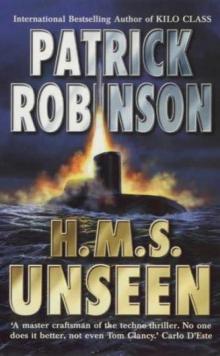 H.M.S. Unseen am-3
H.M.S. Unseen am-3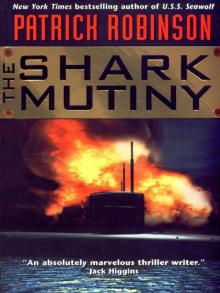 The Shark Mutiny (2001)
The Shark Mutiny (2001)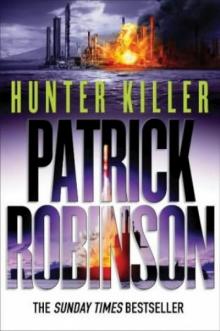 Hunter Killer am-8
Hunter Killer am-8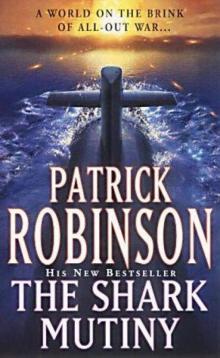 The Shark Mutiny am-5
The Shark Mutiny am-5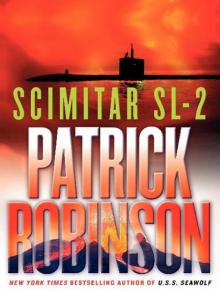 Scimitar SL-2
Scimitar SL-2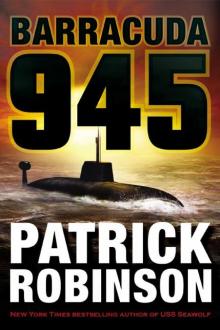 Barracuda 945 am-6
Barracuda 945 am-6 Hunter Killer
Hunter Killer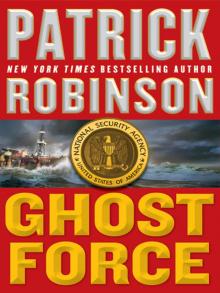 Ghost Force
Ghost Force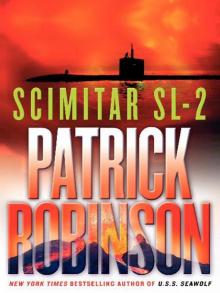 Scimitar SL-2 (2004)
Scimitar SL-2 (2004) Kilo Class am-2
Kilo Class am-2 The Lion of Sabray
The Lion of Sabray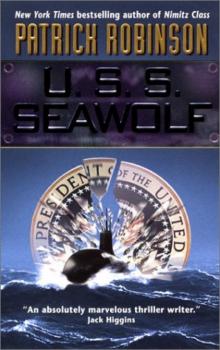 U.S.S. Seawolf am-4
U.S.S. Seawolf am-4 Ghost Force am-9
Ghost Force am-9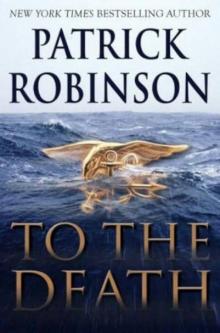 To the Death am-10
To the Death am-10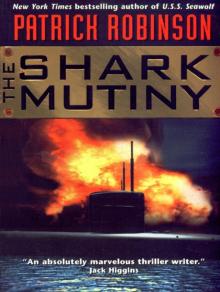 The Shark Mutiny
The Shark Mutiny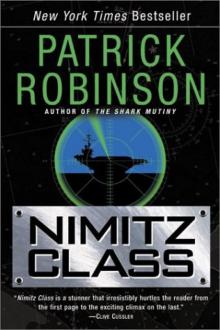 Nimitz Class am-1
Nimitz Class am-1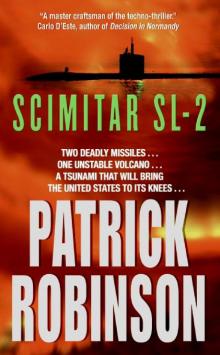 Scimitar SL-2 am-7
Scimitar SL-2 am-7 Barracuda 945
Barracuda 945 Intercept
Intercept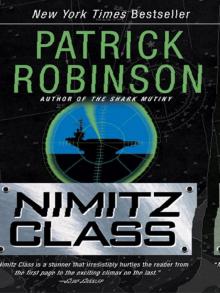 Nimitz Class (1997)
Nimitz Class (1997)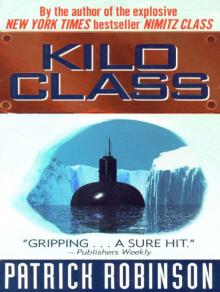 Kilo Class
Kilo Class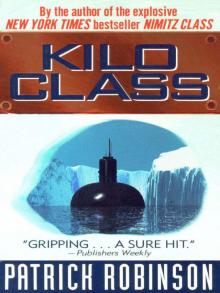 Kilo Class (1998)
Kilo Class (1998) Diamondhead
Diamondhead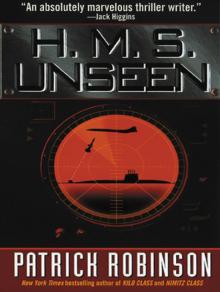 H.M.S. Unseen
H.M.S. Unseen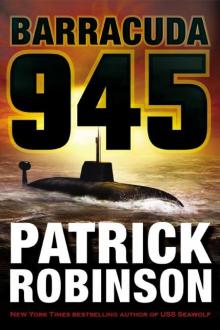 Barracuda 945 (2003)
Barracuda 945 (2003)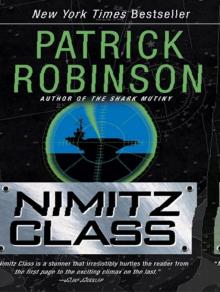 Nimitz Class
Nimitz Class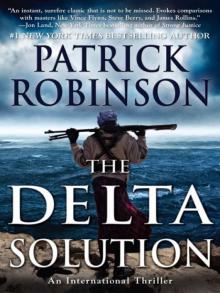 The Delta Solution
The Delta Solution U.S.S. Seawolf
U.S.S. Seawolf